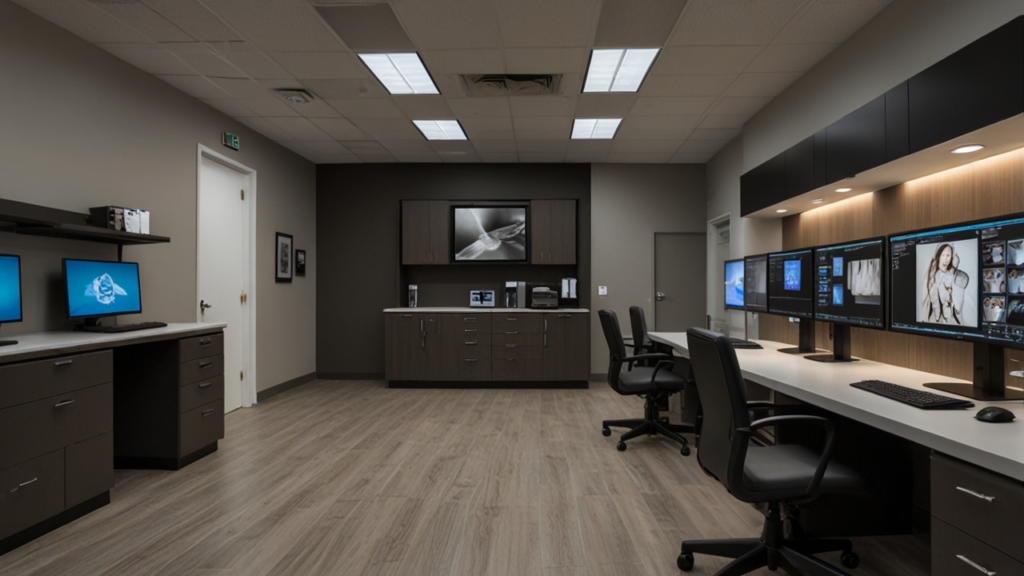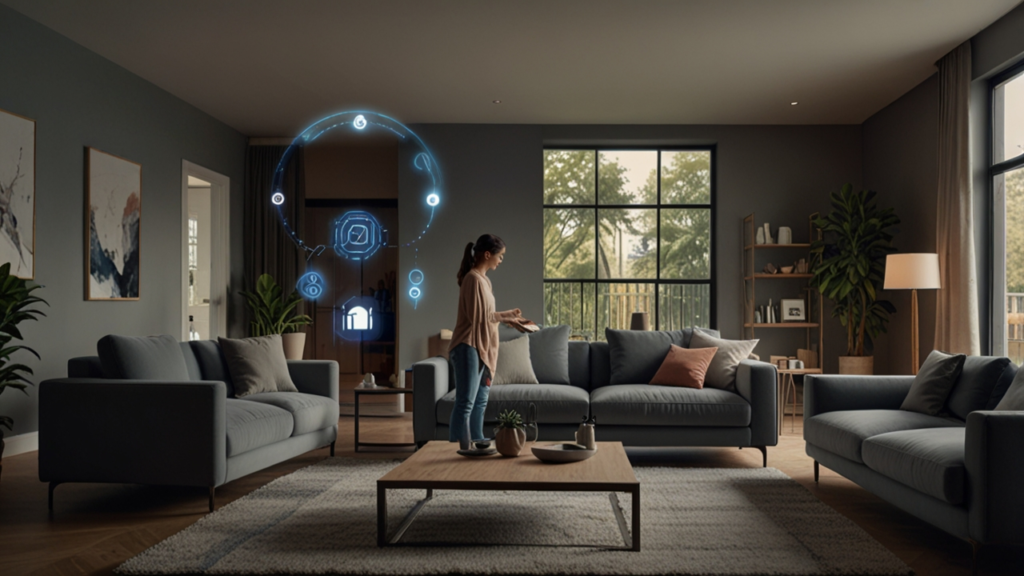Color Management: 7 Professional Standards
Welcome to our comprehensive guide on color management! In this blog post, we explore how this essential process has evolved into a critical standard for diverse industries ranging from printing and photography to digital design and film production. With a focus on innovation and practical applications, we’ll walk you through the history, current state, and future trends of this field. Enjoy an engaging journey into one of the most vital topics in today’s smart tech landscape.
This article is designed for readers of all ages and backgrounds—from curious teenagers to industry professionals—using clear language to explain complex ideas. We invite you to ask questions, share your thoughts, and explore further with our examples and case studies. If you need more detailed technical information, feel free to check out the linked external resources.
Let’s delve into the world of reliable color standards, and discover how they pave the way for better digital and print experiences.
Table of Contents
- Introduction to Color management
- Evolution and History of Color management
- How Color Accuracy Enhances Color management
- Workflow Standards and Their Applications in Color management
- Real-World Case Studies of Color management
- Profile Systems in Modern Color management Solutions
- Future Trends: Visual Consistency and Beyond
Introduction to Color management
Fundamentals and Industry Relevance Cutting-Edge Technologies
The concept of color management originated from the need to reproduce consistent and accurate colors across various devices. Initially, systems relied on device-specific codes, which led to significant discrepancies between rendered colors on screens versus prints.
Standardization was necessary to overcome these challenges, creating methods for calibrating and profiling devices for reliable outputs. Today, many industries rely on established standards to achieve color fidelity.
Experts have observed significant improvements since early implementations, and the techniques used today are built upon decades of trial and refinement. Have you ever encountered a situation where colors did not match your expectations?
Importance for Digital and Print Media
Reliable color reproduction is critical for sectors such as digital imaging, print production, and film. Early methods often led to inconsistencies, but the transition to device-independent color spaces has revolutionized the industry.
Modern workflows embrace advanced calibration tools and consistent color profiles, which ensure that every output is true to its source. For more detailed studies on these advancements, you may refer to a detailed study on color consistency.
This improvement not only boosts aesthetic quality but also enhances overall workflow efficiency. What are your thoughts on the evolution of color display and reproduction?
Evolution and History of Color management
Historical Milestones and Innovations Innovative Technologies
The evolution of color management is marked by significant milestones that include the development of device-independent color spaces such as CIELAB and CIEXYZ. Early workflows were plagued by device-specific color spaces like RGB and CMYK, which often resulted in inconsistent outputs.
A pivotal moment came with the establishment of the International Color Consortium (ICC) in 1993. This organization standardized cross-platform color profile technology and spurred innovation across the industry.
Additionally, Apple’s introduction of ColorSync in the early 1990s paved the way for standardized color systems across operating systems. Would you like to know how such innovations have impacted today’s workflows?
The Role of ACES in the Film and Animation Industries
In digital film production, the Academy Color Encoding System (ACES) was introduced to resolve the inconsistencies in digital color management. Developed in 2004 and later refined with version 1.0 in 2014, ACES now plays a fundamental role in animation, visual effects, and high-end film production.
This system ensures that color fidelity is maintained from initial capture through editing to final broadcasting. Its development stands as a testament to the industry’s dedication to consistency and quality.
For more technical details on ACES, visit a dedicated workflow page. How do you think advancements like ACES might shape the future of digital media?
How Color Accuracy Enhances Color management
Technological Innovations and Precision
Accurate color reproduction is a cornerstone of effective color management. Thanks to advancements in digital imaging and software integration, today’s systems can predict and adjust for color variations with high precision.
Modern technologies leverage artificial intelligence and machine learning to automate calibration processes. This reduces human error and ensures a repeatable, high-quality output every time.
For instance, automated color correction tools analyze the output and adjust for variances in real time. Have you considered how improved precision might elevate your creative projects?
Impact on Consumer Experience and Business Efficiency Future Technologies
Enhancing the exact replication of colors not only improves the visual appeal of content but also leads to significant gains in production efficiency. Companies employing these techniques experience fewer reprints, faster turnaround times, and overall cost savings.
Advanced color measurement tools also allow for ongoing adjustments, ensuring that devices remain in sync over time. These improvements ultimately drive consumer satisfaction and competitive advantage in the market.
To explore additional technical data, you might check out insights on Wikipedia. How would you rate the importance of precision in your everyday digital or print projects?
Workflow Standards and Their Applications in Color management
Standardized Calibration and Profile Systems Tech Innovations
Standardized workflows are central to achieving desired color outcomes, bridging the gap between various devices and media. Calibration and profiling techniques create a digital fingerprint for each device, ensuring consistent performance across the board.
Industry standards like ICC profiles and ACES provide detailed protocols that facilitate accurate color transformations from one device to another. Regular calibration, critical to these systems, requires precise methodologies and rigorous quality controls.
For further exploration of these protocols, you may want to review a comprehensive paper on workflow standards. Do you think standardized approaches could further boost operational efficiencies in your environment?
Software Integration and Remote Collaboration
The integration of advanced software has made it easier for professionals to switch working spaces and automate the conversion process. Cloud-based platforms enable remote calibration and centralized management, ensuring quality output even with distributed workforces.
These tools not only streamline workflows but also allow for real-time adjustments across global networks. They ensure consistent results, which is particularly crucial for organizations with varied production locations.
Modern collaboration tools have reshaped the landscape of remote work, making it easier than ever to maintain uniform outputs. How might enhanced collaboration tools benefit your current projects?
Real-World Case Studies of Color management
Success Stories from Diverse Industries Tech Developments
Companies worldwide have leveraged standardized color management to improve productivity and reduce costs. For instance, Moti Digital in Mexico implemented a centralized color solution using PrintFactory and achieved a 25% boost in productivity by automating corrections.
Similarly, Probo in the Netherlands employed automated color management systems for thousands of daily print orders, ensuring consistent outputs even when dealing with multiple partners and materials.
McDonald’s in Europe even modified its iconic signage colors to adapt to local market trends, yielding a 15% rise in sales within six months. Have you noticed a consistent quality improvement in outputs after incorporating such systems?
Comparison of Case Study Results
Comprehensive Comparison of Case Studies
| Example | Initiative | Outcome | Region |
|---|---|---|---|
| Moti Digital | Cloud-Based Automation | 25% Productivity Boost | Mexico |
| Probo | Automated Job Tracking | Consistent Daily Output | Netherlands |
| Artex | Textile Color Matching | Reduced Waste & Bottlenecks | Europe |
| McDonald’s | Signage Color Adaptation | 15% Sales Increase | Europe |
| Custom Neon | Signage Strategy | Enhanced Brand Perception | Global |
These examples highlight the tangible benefits achieved across different sectors. Manual processes have been substantially reduced and overall quality improved. What success story resonates with you the most?
Profile Systems in Modern Color management Solutions
The Role of ICC Profiles and Calibration Techniques
ICC profiles play a central role in ensuring that colors are accurately translated across various devices. They define the color characteristics of a device, enabling seamless and precise outputs.
Calibration processes create a unique digital fingerprint for each device, ensuring that the colors remain consistent regardless of the medium. The application of such profiles has significantly minimized discrepancies that once plagued early workflows.
For more in-depth technical insights, a detailed case study provides examples of effective profile management in the signage industry. What additional calibration methods might enhance your current systems?
Integration into Cloud-Based Platforms and Remote Systems
Modern solutions embed profile systems into cloud-based platforms to manage distributed devices efficiently. This integration ensures that remote teams can access and apply consistent profiles for reliable output.
The use of cloud technology not only streamlines the calibration process but also provides centralized management and real-time updates. Businesses have seen improved operational efficiency and reduced errors with these systems.
Embracing these solutions can lead to a more dynamic and responsive production environment. Do you believe cloud integration is key to future improvements in device calibration?
Future Trends: Visual Consistency and Beyond
AI-Driven Automation and Next-Generation Standards
Future trends indicate that automation powered by AI will further advance color management. Such systems are poised to reduce manual intervention and provide precise color corrections automatically.
This next generation of technology is expected to integrate sensor data and predictive analytics to optimize outputs even further. Emerging standards like the next iteration of ACES promise to unify workflows across multiple industries.
For instance, advancements in machine learning enable real-time quality control and fine-tuning—ensuring outputs remain consistent over time. How do you see AI impacting the reliability of device calibration in the coming years?
Customization and Global Collaboration
Future solutions will enable increasingly granular customization of color outputs for personalized marketing applications and packaging design. Global collaboration will be enhanced through cloud-based networks that ensure consistent quality across distributed teams.
This trend will likely lead to new opportunities in international markets, where cultural preferences and regulatory requirements must be balanced with brand consistency. Experts anticipate that personalized adjustments will drive market differentiation and business growth.
Enhancing remote collaboration means teams across continents can now share calibrated profiles and improve product consistency. Do you foresee personalization as the next frontier for improved operational flexibility?
Insightful Overview of Color management
This section offers a captivating look into a subject where visual elements remain a critical part of modern storytelling. Throughout history, advancements in this field have enabled professionals to consistently achieve impeccable results across screens and paper. Digital production houses have long relied on systems that bring forward precise reproducibility so that outputs match expectations, no matter the medium. In an environment where every detail counts, innovative calibration techniques have enhanced the reliability of processes, bringing efficiency to a level previously thought impossible. Organizations benefit from standardized operating procedures that simplify complex tasks while providing reliable consistency, paving the way for creative freedom without the technical distractions.
Revolutionary approaches have allowed for the seamless application of robust protocols that ensure each creation is not only authentic but also enhanced by technological precision. The journey of embracing contemporary solutions has resulted in a world where creativity and efficiency harmoniously coexist. Increasingly, remote collaboration and real-time system adjustments allow teams in disparate locations to operate cohesively. By refining processes with cutting-edge digital tools, modern individuals have been able to overcome traditional obstacles. This exciting era has replaced preliminary experimental measures with advanced strategies that foster excellence. Opportunities for innovation continue to emerge as professionals experiment with novel approaches and integrate comprehensive frameworks across multiple facets of production.
Ultimately, the transformative impact of these refined methodologies resonates through industry narratives, emphasizing measurable progress and newfound capabilities. Such progress not only elevates creative achievements but also contributes to organizational growth on a global scale. As we ponder these advancements, it is evident that the integration of modern systems has reshaped our understanding of precise outcomes. The future is undoubtedly bright, as the ongoing transition promises to unveil new standards that redefine how outputs are perceived.
FAQ
What is color management?
It is the process of ensuring that the color output of various devices remains consistent and accurate by applying standardized calibration and profiling techniques.
How did the history of color management begin?
The history began with early digital workflows that relied on device-specific color spaces, evolving over time into standardized systems with the introduction of organizations such as the ICC and technologies like ColorSync.
What role do ICC profiles play in modern solutions?
ICC profiles define the color characteristics of each device, enabling accurate color translation and consistency across different media and platforms.
How is AI transforming the field?
Artificial intelligence is automating calibration processes and predicting color variations, reducing human error and improving overall efficiency.
Can cloud-based solutions improve remote collaboration?
Yes, cloud-based platforms allow for centralized management and real-time updates, ensuring that remote teams maintain consistent color outputs across all devices.
Conclusion
In summary, the journey of color management from rudimentary methods to sophisticated, automated systems highlights its critical role in today’s digital and print industries. By implementing standardized profiles and leveraging advanced technologies, organizations achieve remarkable consistency and quality across all media types.
We’ve delved into historical milestones, cutting-edge AI integrations, globally acclaimed case studies, and futuristic trends that promise even more precise control in the future. Whether you’re a creative professional or a tech enthusiast, the principles and applications covered here can inspire you to elevate your own projects.
If you enjoyed this deep dive into the standards of color management, please share your thoughts in the comments and consider contacting us for more information at Contact. Have you experienced similar challenges or breakthroughs in your work?
For more information on related topics, visit our Smart Tech category page.



